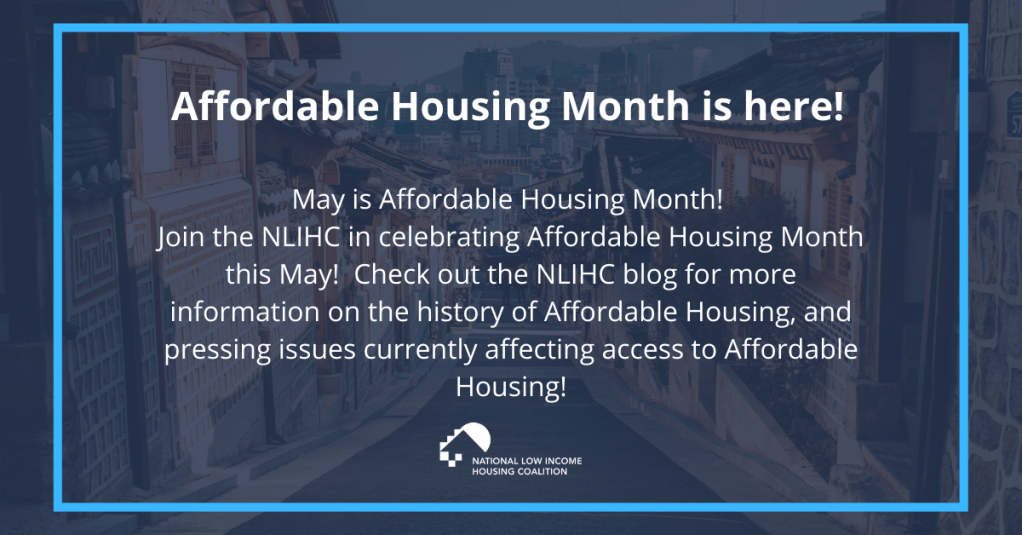The month of May is National Affordable Housing Month! This year, NLIHC is celebrating the occasion by highlighting the history of affordable housing in the United States.
The shelter provided by housing is one of humanity’s most basic needs for survival, yet due to social, economic, and political challenges, many people struggle to obtain and maintain affordable housing. The federal government defines housing as affordable when it consumes no more than 30% of household income. Only when costs are below the 30% threshold can households comfortably pay their monthly housing costs while still having money left over for other necessities, like food and transportation. Housing affordability is thus almost completely dependent on household income. Unfortunately, a growing share of the U.S. population cannot afford rising housing costs. These days, as many as one in seven households spend more than half their income on housing.
Of course, the struggle for affordable housing in the U.S. is not new. However, it wasn’t until the Great Depression that the federal government became deeply involved in the housing market, creating numerous federal housing and finance programs to alleviate the economic, political, and social hardships felt by households at all income levels. In 1934, Congress created the Federal Housing Administration – now known as the Department of Housing and Urban Development (HUD) – and made home ownership attainable to members of the broader public by establishing mortgage insurance programs. Such New Deal-era mortgage programs laid the foundation for the current mortgage system by enabling families to purchase houses with low down payments and long-term, fixed-rate mortgages.
In the 1960s, HUD became a cabinet-level agency and was instrumental in helping ensure that housing – including rental housing – was affordable, accessible, and safe. In 1968, meanwhile, Congress enacted the “Fair Housing Act,” which prohibited discrimination in the sale, renting, or financing of properties and mortgages based on race, religion, national origin, or sex. Congress also created several other programs that provided subsidies and low interest rates to private investors to incentivize the rehabilitation of rental housing at affordable prices.
These days, numerous federal programs exist to ensure that low-income Americans have access to stable, affordable housing. Yet despite the federal government’s progress in making housing accessible and affordable to low-income Americans, half of all renters are still severely cost-burdened, spending more than 30% of their income on housing. Some of the blame can be placed on “affordable” housing policies that favor homeowners rather than renters and on cuts to federal housing investments that began under the Nixon administration and continued under Reagan and Clinton. In particular, declining investment in HUD’s rental assistance programs have made homelessness a permanent part of American life, even while middle- and upper middle-class homeowners continue to receive federal subsidies through tax deductions. Stagnating wages, rising housing costs, and higher building costs have meanwhile widened the gap separating many Americans from affordable housing.
Even so, the last hundred years have shown that these problems can be addressed and solved through decisive federal action. There is no better time than National Affordable Housing Month to reflect on the essential role played by federal housing policy in ensuring that all Americans have access to stable and affordable housing in communities of their choice.


Leave a comment